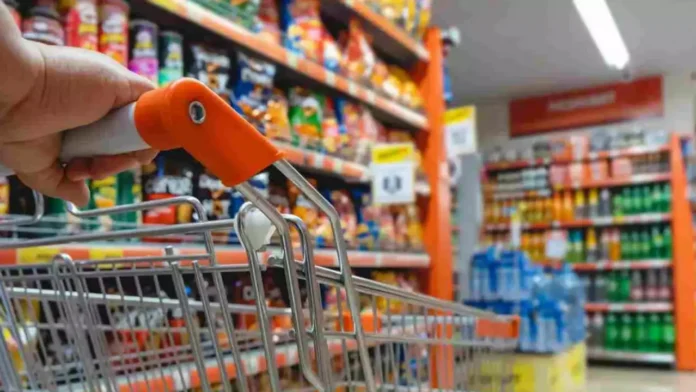The upcoming general elections and a subsequent decrease in inflation are expected to boost consumer demand across various sectors, ranging from groceries to apparel to electronics, from March-April onwards. Chief executives of several prominent companies have noted that rural markets and products in the mass segment are already displaying indications of recovery.
Consumer goods companies had previously anticipated a recovery in demand during the December quarter. Although that anticipation hasn’t materialized, chief executives have stated that the slowdown in consumption has come to a halt. They further noted that sales of mass-segment products are now picking up after a gap of over three years.
“While green shoots of recovery are visible in rural India, the demand growth is still trailing urban markets,” Dabur India chief executive Mohit Malhotra said. “We are hopeful rural markets will post a strong recovery in the new year. We are already seeing the gap between rural and urban growth shrinking.”
Malhotra said that in 2023, urban markets have been the main contributors to growth, with modern trade and e-commerce taking the lead.
Neeraj Khatri, the Chief Executive of Wipro Consumer Care, responsible for the India business and the maker of Santoor soap, mentioned that there are signs of improvement in rural demand, and consumer confidence is on the rise each quarter.
“Price-led growth has tapered off in the industry and volumes are driving growth,” he said. “This should put industry on a better pedestal next year. Monsoon has been decent, so is government spending. It’s also time for rural people to come out from the debt (they had to avail) during Covid.”
Market researcher NielsenIQ reports that while volume growth for the fast-moving consumer goods (FMCG) industry in urban India has been on a positive trajectory since April-June last year, rural markets have experienced marginal growth this calendar year.
During the September quarter, urban markets exhibited a year-on-year growth of 10.2%, whereas rural markets grew by 6.4%, according to the report. Before the onset of the Covid-19 pandemic, rural markets were the primary drivers of overall growth, expanding at twice the rate of urban markets.
However, the demand has slowed down in the current quarter.
Mayank Shah, senior category head at Parle Products, a biscuits maker, mentioned that volumes remained stagnant in November-December, with only slight growth in value sales.
However, he anticipates a revival in the next quarter. “With elections around the corner, overall spending in the economy tends to increase. This should contribute to the revival, and we expect volumes to grow at a high single-digit rate in the next quarter,” Shah said.
Lalit Agarwal, CEO of V-Mart Retail, a retail chain with a focus on rural markets, also noted the presence of signs indicating an improvement in rural demand, despite ongoing challenges such as inflation and unemployment.
“But full recovery is expected around April-June, led by elections when rural economic activities get a boost,” he said.
Earlier this month, the Reserve Bank of India revised the GDP growth forecast for FY24 to 7%, up from the earlier estimate of 6.5%, citing a stronger-than-expected performance in the July-September quarter.
Corporate honchos also anticipate an increase in discretionary spending across various segments by the time of the elections.
“The general elections and increased government spending before that will put more money into the hands of consumers, boosting discretionary spending,” said Devaranjan Iyer, CEO of departmental store chain Lifestyle International. “Also, by then, we expect the huge spends on experience such as leisure and travel will normalise and consumers will shift their spending from buying experience to products,” he said.
Iyer anticipates a resurgence in discretionary demand, such as apparel, by May-June. He mentioned that in the October-December quarter, same-store sales were either flat or slightly negative.
Sales of both apparel and electronic products have been stagnant for more than a year, while those of mass-segment electronic products have remained subdued since the outbreak of the pandemic.
As per the research by GfK, there was a minor upturn in the mass segment during Diwali.
Industry executives said it continued even in December, buoyed by wedding-led demand in the Hindi heartland.
Kamal Nandi, the business head of Godrej Appliances, stated that market sentiments in December are undoubtedly more positive than last year, with a growth of 10-15% across various categories, including a noticeable pick-up in the mass segment.
“We expect demand should revive from April onwards due to elections, summer and more agricultural income,” he said.
Tarun Pathak, director at smartphone tracker Counterpoint Research, anticipates a general rebound in mobile phone sales as the prices of 5G phones continue to decrease and enter lower pricing tiers.
During the festive season, some positive signs were already apparent when brand-driven price drops boosted the sub-INR 12,000 segment, which had been severely affected for the last several quarters, he mentioned.
India witnessed a 9% year-on-year decline in smartphone shipments, amounting to 152 million units in 2022, according to Counterpoint. The projections for 2023 indicate an expected figure of 150 million units.





